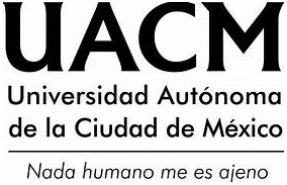THE AESTHETIC JUDGMENT OF BEAUTY. THE SUBLIMITY IN ART AND KANDINSKY´S THOUGHT
DOI:
https://doi.org/10.29092/uacm.v6i11.161Keywords:
Art, Kant, beauty, sublime, KandinskyAbstract
The Kritik der Urteilkraft is a fundamental piece in the history of art. Kant develops the two categories that mark an important division. The category of beauty predominates in the paradigm of classic art; representation, which is a determined form, prevails in the composition of the work. The category of sublime breaks with the limits imposed by the form, letting the deepest feelings of the human being appear. Kandinsky is the first one to pass over form to get into abstraction, reaching a more pure way of expression. This painter shows in the material support the “internal element”; his work moves away from the category of beauty and the prototypal representation. His art settles what is sublime for the artist.
Downloads
References
EAGLETON, T. (2006), La Estética como Ideología. Madrid, Trotta.
KANDINSKY, W. (1959), Punto y línea frente al plano. Buenos Aires: Nueva Visión.
------(1960), De lo espiritual en el arte. Buenos Aires: Ediciones Galatea Nueva Visión.
KANT, M. (1977), Crítica del juicio. Madrid: Espasa Calpe. (1979), Kritik der Urteilkraft. Frankfurt: Suhrkamp.
------(1991), Crítica de la razón pura. México: Porrúa. IMÁGENES
Artehistoria, revista digital. Sitio disponible en http://www.artehistoria.com
Wassily Kandinsky. Maler, Graphiker. Sitio disponible en http:// www.dhm.de/lemo/html/biografien/KandinskyWassily/
Orazio Centaro’s Art Images on the Web. Sitio disponible en http:// www.ocaiw.com/catalog
Ciudad de la pintura, la mayor pinacoteca virtual. Sitio disponible en http://pintura.aut.org
Kandinsky. Sitio disponible en http://cgfa.sunsite.dk/kandinsky/
Downloads
Published
Issue
Section
License
This Journal is licensed under Creative Commons Mexico 2.5. It is allowed to reproduce and disseminate the contents of the Journal for educational or research purposes, not for profit, as long as they are not mutilated and cite the source (Andamios, Revista de Investigación Social) and the author.
The copyright of the articles published in Andamios, Revista de Investigación Social are transferred by the author(s) to Universidad Autónoma de la Ciudad de México when the originals have been accepted, so that they are published and distributed both in the printed and electronic versions of the Journal. However, as established by law, the author(s) retains their moral rights. The author(s) will receive a form of assignment of copyright that they must to sign when their original has been accepted. In the case of collective articles, the signature of one of the authors will suffice, provided that the latter has obtained the consent of the others.
Authors may use the material of their article in other works or books published by themselves, with the condition of quoting Andamios as the original source of the texts.
The articles contained in this publication are the responsibility of their authors and do not compromise the official position of Andamios, Revista de Investigación Social of the Universidad Autónoma de la Ciudad de México.


